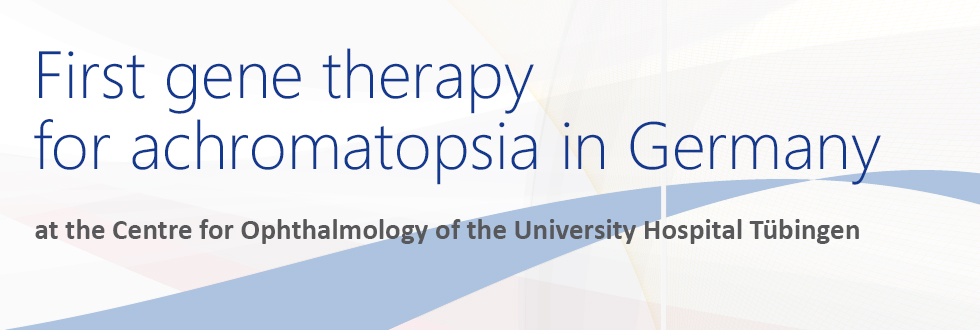First gene therapy for achromatopsia in Germany
The Centre for Ophthalmology of the University Hospital Tübingen together with partners of the Ludwig-Maximilians-University in Munich has started a gene therapy trial for achromatopsia. The clinical trial is conducted as a phase I/II study and represents the first gene therapy study for a hereditary eye disorder in Germany and is the first gene therapy study worldwide for patients with achromatopsia.
Approximately 3000 people in Germany suffer from achromatopsia. This hereditary retinal disease presents at birth or early infancy and is typically characterized by reduced visual acuity, increased sensitivity to light and very poor or absent color vision. The disease is caused by a complete loss of cone photoreceptor function. These receptors normally control color recognition and daytime vision. About one third of achromatopsia patients show mutations in the CNGA3 gene - the first gene for achromatopsia identified by Tübingen researchers.
Three years ago an international consortium comprising 20 researchers and ophthalmologists from the Centre for Ophthalmology in Tübingen, the Ludwig-Maximilians-University in Munich and the Columbia University in New York embarked on the RD-Cure project to develop a gene therapy for achromatopsia. The project is funded by the Tistou and Charlotte Kerstan Foundation.
The treatment involves supplementing cone photoreceptors with normal copies of the CNGA3 gene to restore their normal function. This is achieved by a surgery to inject the normal gene copies into the retina, using a modified virus to carry the genes into the cells. The virus that is used for the gene therapy belongs to the group of adeno-associated viruses. It was developed in the group of PD Dr. Stylianos Michalakis who works with Professor Martin Biel at the Center for Integrated Protein Science CIPS-M and Department of Pharmacy in Munich.
Professor Biel, who is the co-coordinator of the RD-Cure Consortium, emphasizes: “Not only has the virus never been associated with any human disease, it can actually not independently replicate in the infected cell. It is thought to be among the safest possible vehicles for gene delivery and is used in clinical trials worldwide.” A couple of weeks after the delivery the cells are able to make use of the supplemented gene copies and start with the production of the missing protein. “It´s a bit like a slip of paper with the correct word that you put in a book containing a typo” explains Professor Bernd Wissinger from the Institute for Ophthalmic Research in Tübingen who is coordinating the project. “We cannot erase the gene defect but we can supplement the missing information”.
The first patient with achromatopsia has been treated in November 2015 at the University Eye Hospital in Tübingen. By the end of 2016 eight more patients will have received the treatment. Only then the outcome of the treatment can be evaluated says Professor Ulrich Bartz-Schmidt, the clinical director of the University Eye Hospital. “We hope that our patients will show an improvement with respect to light sensitivity and visual acuity.”
The Centre for Ophthalmology of the University Hospital Tübingen is one of the most important centres for hereditary retinal disorders in Germany and pioneers in research and clinical work. Achromatopsia is only one example of numerous rare genetic disorders which are incurable to date and for which gene therapy offers new perspectives. The RD-Cure Consortium is currently developing a second gene therapy trial for Retinitis pigmentosa, another type of retinal disorder.





